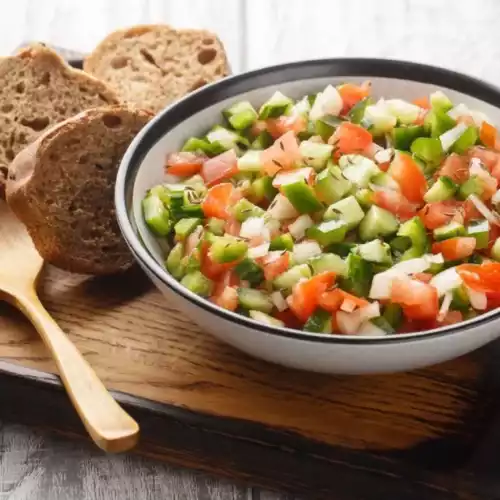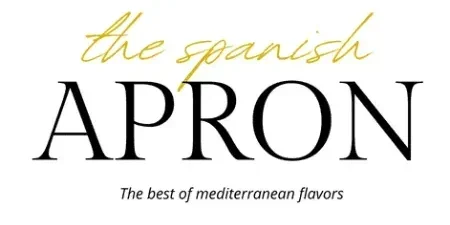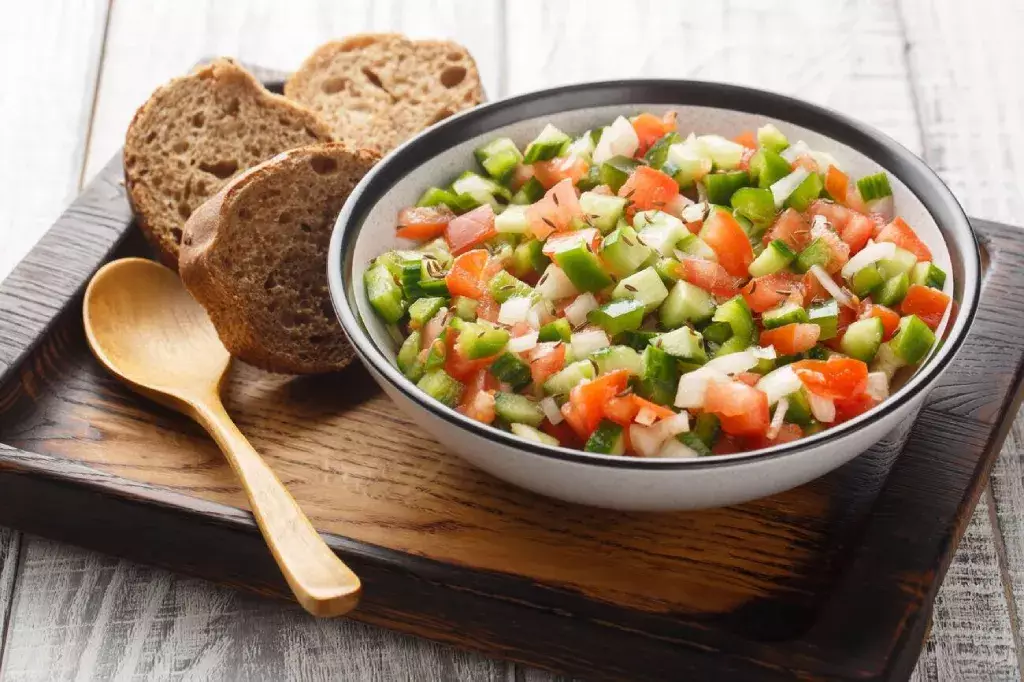Pipirrana, also known as picadillo or piriñaca, is a classic Spanish summer salad that embodies Andalusia’s fresh and vibrant flavors. Originating from the province of Jaén, this dish is a staple across various regions, including Murcia and even parts of Castilla-La Mancha, such as Ciudad Real. The beauty of pipirrana lies in its simplicity and the ability to adapt to local ingredients, making it a versatile favorite in many Spanish households.
Table of Contents
Origins of Pipirrana: A Journey Through Andalusia and Beyond
Pipirrana has deep roots in Andalusian cuisine, where it has been enjoyed for generations as a refreshing and light meal, perfect for the hot summer months. The dish’s name and specific ingredients may vary depending on the region, but the essence of pipirrana remains consistent: a celebration of fresh produce and simple, wholesome flavors. Whether you find it served as a side dish or a main course, pipirrana is a testament to Spain’s rich culinary heritage.
Essential Ingredients and Regional Variations
Tomatoes and Peppers: The Stars of the Dish
The base of any good pipirrana is the tomatoes and green peppers. In some regions, these vegetables are used fresh, while in others, preserved tomatoes are preferred. The freshness of the tomatoes is crucial, as it provides the salad with its characteristic juicy texture and vibrant color. Green peppers add a slight bitterness that balances the sweetness of the tomatoes, creating a harmonious flavor profile.
Fish Options: Tuna, Sardines, and More
Another key component of this salad is the addition of fish, typically tuna in olive oil. In some versions, sardines or other types of salted fish are used, adding a briny depth that complements the salad’s fresh ingredients. The choice of fish can vary widely, reflecting local preferences and availability. In coastal areas, for example, fresh seafood might be used, adding a distinct maritime twist to the dish.
The Majado: The Magic Touch
One of the defining features of the dish is the majado, a traditional dressing made by mashing together egg yolks, salt, and olive oil, sometimes with a touch of garlic. This dressing not only binds the salad ingredients together but also infuses the dish with a rich, creamy texture and a burst of umami flavor. Some variations might include a hint of vinegar or lemon juice for added brightness, but the essence of the majado remains in its simplicity and balance.
Step-by-Step Preparation: How to Make the Best Salad
Tips for Choosing the Best Ingredients
To make a truly authentic salad, it’s essential to start with the best ingredients. Opt for ripe, juicy tomatoes that are at the peak of their season. The peppers should be crisp and free of blemishes, while the fish, whether fresh or preserved, should be of the highest quality available. Using extra virgin olive oil will also make a significant difference, as it brings out the flavors of the salad and adds a smooth, fruity note.
Popular Variations: From Traditional to Modern
While the traditional pipirrana is a simple mix of tomatoes, peppers, onions, and fish, many modern variations have emerged. Some recipes include cucumbers for added crunch, though this is less common. Others might feature boiled potatoes, olives, or capers, providing a more robust texture and flavor. The beauty of pipirrana is that it can be adapted to suit personal preferences, making it a dish that evolves with the times while still honoring its roots.
Benefits of Pipirrana: Simple, Healthy, and Delicious
Pipirrana is not just a delicious dish; it’s also incredibly healthy. Packed with fresh vegetables, it’s a great source of vitamins and antioxidants. The fish adds protein and omega-3 fatty acids, while the olive oil contributes to heart health. This salad is light, low in calories, and highly nutritious, making it an excellent choice for those looking to maintain a balanced diet during the summer months.
Serving and Enjoying it on Any Occasion
Pipirrana is a versatile dish that can be enjoyed in various settings. It’s perfect as a starter, a light lunch, or even a side dish at a summer barbecue. Serve it chilled, allowing the flavors to meld together, and pair it with a crisp white wine or a refreshing tinto de verano for the ultimate summer experience. Whether you’re hosting a dinner party or enjoying a quiet meal at home, pipirrana brings a taste of Spain’s sunny summers to your table.
FAQ: Common Questions
What is the origin of pipirrana? Pipirrana originates from Andalusia, particularly from the province of Jaén, though it’s popular in other regions like Murcia and parts of Castilla-La Mancha.
Can pipirrana be made in advance? Yes, pipirrana can be prepared a few hours ahead and chilled in the refrigerator. Allowing it to rest helps the flavors to develop further.
Is pipirrana always made with fish? While fish is a common ingredient in pipirrana, particularly tuna, it can be omitted or substituted with other proteins, such as boiled eggs or chickpeas, for a vegetarian version.
What can I serve with pipirrana? Pipirrana pairs well with grilled meats, fresh bread, and a variety of Spanish tapas. It’s also a great side dish for seafood.
Related Spanish Recipes: Exploring More Summer Delights
- Salmorejo: A creamy cold tomato soup from Córdoba, perfect for hot days.
- Gazpacho: Another cold soup, this one from Andalusia, made with tomatoes, peppers, and cucumbers.
- Ensaladilla Rusa: A Spanish take on the Russian salad, typically made with potatoes, carrots, peas, and mayonnaise.
- Tortilla Española: The famous Spanish omelette made with potatoes and onions, a must-try for any Spanish food enthusiast.
- Ajo Blanco: A cold almond and garlic soup, typically served with grapes or melon.
A Salad That Celebrates the Flavors of Summer
Pipirrana is more than just a salad; it’s a celebration of summer, bringing together the freshest ingredients in a dish that’s both simple and full of flavor. Whether you stick to the traditional recipe or experiment with your variations, pipirrana is a versatile and delicious way to enjoy the best of Spanish cuisine. So next time you’re looking for a refreshing, healthy meal, consider making pipirrana, a dish that truly embodies the spirit of summer.

Pipirrana: 3 Essential Tips to Make the Perfect Spanish Summer Salad
Ingredients
- 4 Ripe tomatoes, chopped
- 1 Green bell pepper, chopped
- 1 Small onion or spring onion, finely chopped
- 2 Hard-boiled eggs
- 1 Can (160g) tuna in olive oil, drained (Optional)
- 1 Garlic clove, minced (optional)
- 4 tbsps Extra virgin olive oil
- 1 tbsp White wine vinegar (optional)
- Salt to taste
- Optional Additions: 1 cucumber, chopped; 1 small can of sardines, drained; 8-10 olives, pittedSteps:
Instructions
- Prepare the Vegetables: In a large bowl, combine the chopped tomatoes, green pepper, and onion. If using cucumber, add it now.
- Make the Majado: Peel the hard-boiled eggs and separate the yolks from the whites. Set the whites aside. In a small bowl, mash the yolks with a fork. Add the minced garlic (if using), a pinch of salt, and slowly mix in the olive oil until you have a smooth paste.
- Combine the Ingredients: Pour the majado over the chopped vegetables and mix well to combine. Add the tuna and mix gently to avoid breaking it up too much.
- Season the Salad: Taste the salad and add more salt if needed. If you prefer a tangy flavor, drizzle with white wine vinegar and mix again.
- Finish and Serve: Chop the reserved egg whites and sprinkle them over the salad. If desired, garnish with olives or additional toppings. Serve immediately, or refrigerate for an hour to allow the flavors to meld.








